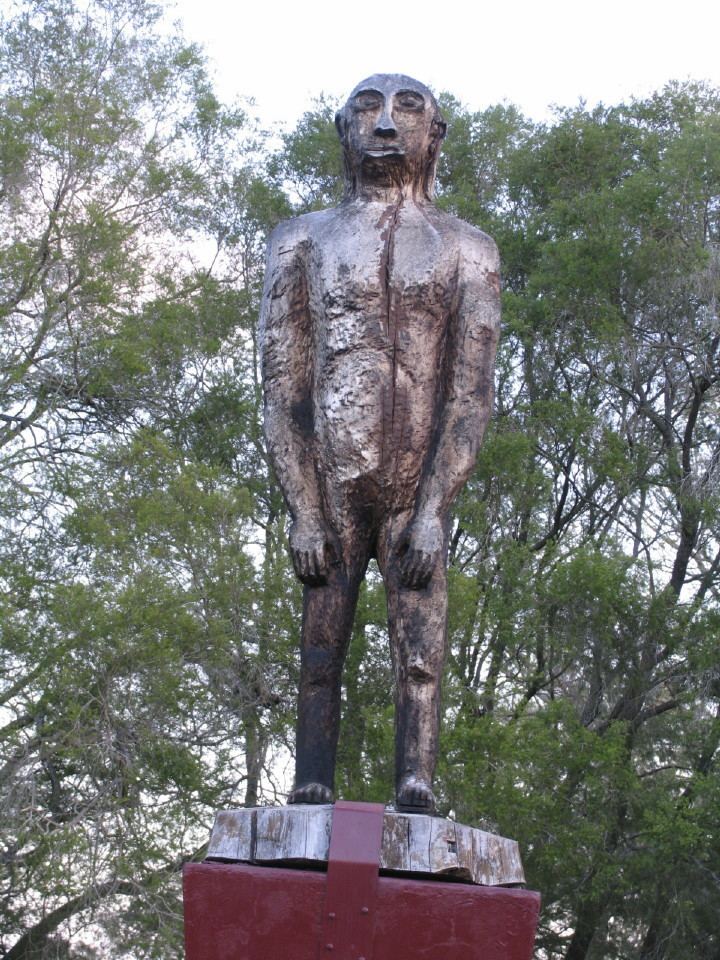 | ||
This is a list of cryptids notable within cryptozoology, a pseudoscience that presumes the existence of animals and plants that have been derived from anecdotal or other evidence considered insufficient by mainstream science. While biologists regularly identify new species, cryptozoologists focus on entities mentioned in the folklore record (the academic study of which is folkloristics).
Cryptozoologists may consider any figure from folklore to be a "cryptid" (from the Greek κρύπτω, krypto, meaning "hide") after the term cryptozoology and meaning a 'hidden animal'. The Oxford English Dictionary defines the noun cryptid as "an animal whose existence or survival to the present day is disputed or unsubstantiated; any animal of interest to a cryptozoologist". Some dictionaries and encyclopedias define the term "cryptid" as an animal whose existence is questionable.
Well-known examples include the Yeti in the Himalayas, the Loch Ness Monster in Scotland, Sasquatch in North America, and chupacabras in the Americas. While there have been attempts to codify cryptozoology approaches, unlike biologists, zoologists, botanists, and other academic disciplines, however, "there are no accepted, uniform, or successful methods for pursuing cryptids".
Eberhart's classification
Cryptozoologist George M. Eberhart classifies ten types of mystery animals under the cryptozoological umbrella:
- Distribution anomalies (known animals reported outside their normal range, e.g. the anomalous big cats of the U.K.);
- Undescribed, unusual, or outsized variations of known species (e.g. the giant anacondas reported from Amazonia or the spotted lions of East Africa);
- Survivals of recently extinct species (e.g. ivory-billed woodpecker presumed extinct c. 1960, the Tasmanian Tiger (Thylacine), declared extinct in 1936, or the Steller's sea cow presumed extinct c. 1768, both of which are occasionally claimed to have survived to the present);
- Survivals of species known only from the fossil record into modern times (e.g. the mokele-mbembe of central Africa, sometimes described as a living dinosaur);
- Lingerlings, or survivals of species known from the fossil record much later into historical times than currently thought (e.g. the woolly mammoth, presumed extinct c. 12,000 BCE but occasionally purported to have survived into later eras);
- Animals not known from the fossil record but related to known species (e.g. the Andean wolf or the striped manta-ray reported by William Beebe in the 1930s);
- Animals not known from the fossil record nor related to any known species (e.g. North America's Bigfoot or most sea serpents];
- Mythical animals with a zoological basis (e.g. the griffin, partly inspired by dinosaur fossils of Central Asia);
- Seemingly paranormal or supernatural entities with some animal-like characteristics (e.g. Mothman, black dogs or some fairies from folklore);
- Known hoaxes or probable misidentifications (e.g. the jackalope, an antlered rabbit, a popular hoax in taxidermy).
Additionally, Eberhart argues for six exclusions from classification as a cryptid:
- Insignificance. "Cryptids must be big, weird, dangerous or significant to humans in some way."
- Lack of controversy. "Someone needs to observe a mystery animal and someone else needs to discredit the sighting. Cryptozoologists function as interventionists between witnesses and skeptical scientists."
- Erratics. "The out-of-place alligator […] that turns up in an odd spot, undoubtedly through human agency, is not a zoological mystery […] [I]f someone discovers a new species of alligator that lives only in sewers, that is a different matter."
- Bizarre humans (e.g. zombies)
- Angels or demons […] "the paranormal or supernatural is admitted only if it has an animal shape (a werewolf sighting, which might involve a real dog or wolf, or a mystery canid)."
- Aliens "[unless such extraterrestrials] arrived a long time ago and thus classify as residents."
